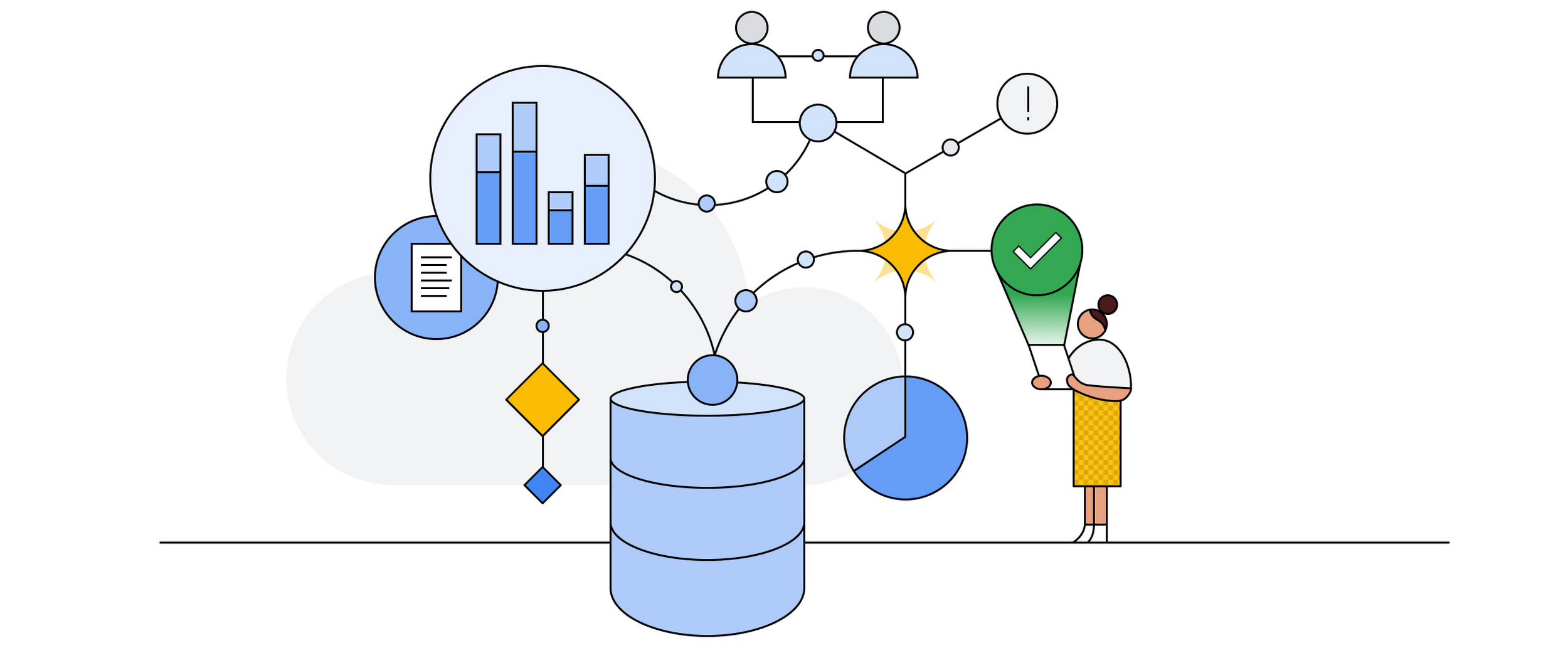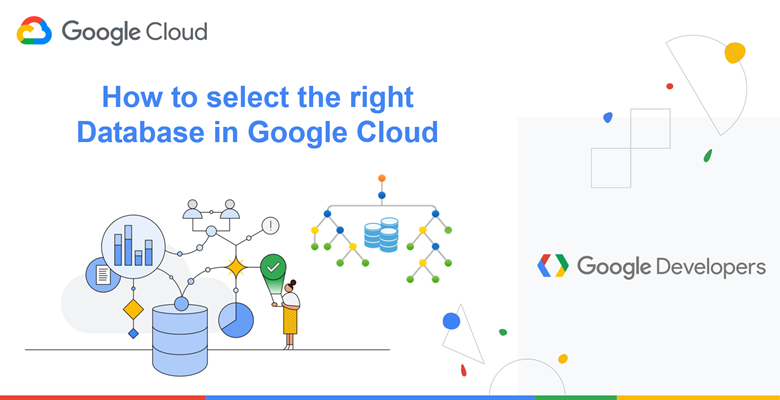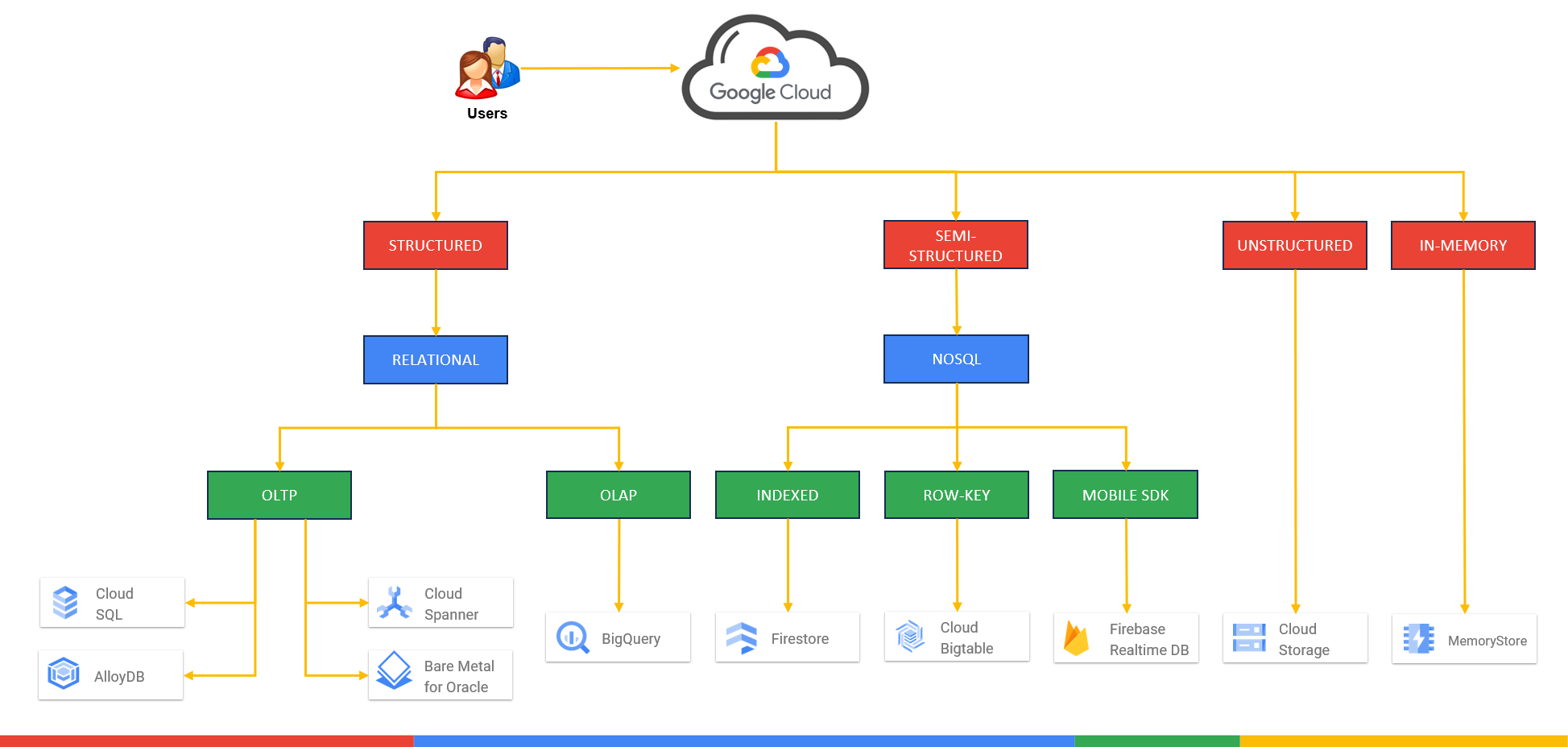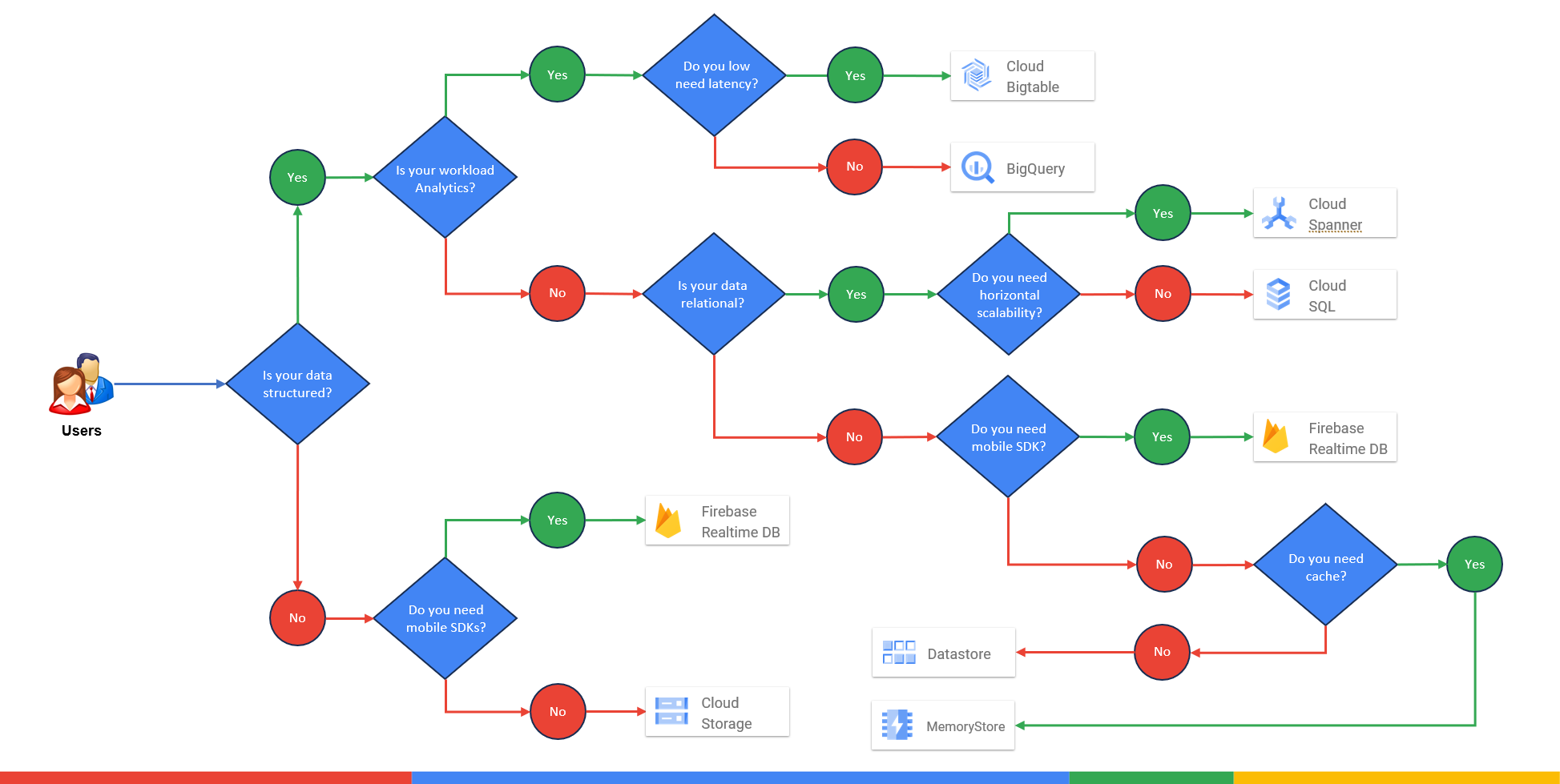In the competitive world of cloud technologies, choosing the right database is essential to the success of any project or application. Google Cloud offers a wide range of database options that we explain in a previous article, each with their own unique features and benefits. In this article, we'll explore the different database options available in Google Cloud and provide guidance to help make the right decision based on your specific project needs.

At the moment of making the decision to choose a Google Cloud database for our project, one of the first steps is to analyze the type of database that best suits the project based on the characteristics provided by each database and that meets the needs of the project. The database types available in Google Cloud are as follows:
- Relational databases: Relational databases are the most common type of database and are used to store structured data. In Google Cloud, relational databases offer a wide range of solutions to meet various data storage and management needs. However, we must ask ourselves if require an OLTP or OLAP database. The OLTP-type relational databases offered by Google Cloud are Cloud SQL (MySQL, PostgreSQL, SQL Server), AlloyDb for PostgreSQL, Cloud Spanner and if we want an Oracle database we could implement it using Bare Metal, while on the OLAP side, Google Cloud offers the jewel in the crown that is BigQuery.
- Semi-structured databases: In Google Cloud, semi-structured databases offer versatile options for storing flexible and unstructured data. At this point we must ask ourselves if we require a fully managed, scalable, serverless document-based database such as Firestore, or if we require an key value database with HBase compatibility with single digit millisecond latency, unlimited scaling and 99.999% availability such as Cloud Bigtable , or a NoSQL database that allows to store and synchronize data between users and devices in real time such as Firebase Realtime Database.
- Unstructured databases: At Google Cloud, we focus on unstructured storage which refers to the ability to store and access data without a defined format or schema. Cloud Storage is an unstructured cloud storage service that allows users to store a wide variety of data, such as media files, documents, backups, and more, securely and reliably.
- In-memory databases: In Google Cloud, an in-memory database refers to a data storage service that uses RAM to store and access information quickly and efficiently. This allows applications to have ultra-fast response times and low latency, which is especially beneficial for applications that require fast access to real-time data. Google Cloud offers a database called Memorystore which supports two popular in-memory database engines which are Redis and Memcached.
To select the correct database for our project, we can also do an analysis from another point of view and it is through a decision tree that surely at some point we have already seen or reviewed on the Google Cloud website. In this decision tree we ask ourselves different specific questions that can also be aligned with the previous point (database types) and that will help us make the decision to select the database that can best be adapted to our project.
Conclusion
Choosing the right database on Google Cloud is critical to the success of a project. Each option has its advantages and it is important to carefully evaluate the specific needs before making a decision. Consider performance, scalability, management complexity, and application requirements to determine which would be the best option. Google Cloud offers robust solutions for a variety of use cases. Select wisely and take your project to new heights in the Google Cloud.
Follow us:



